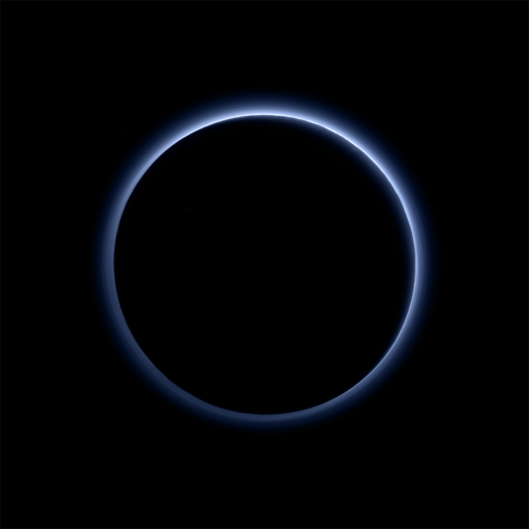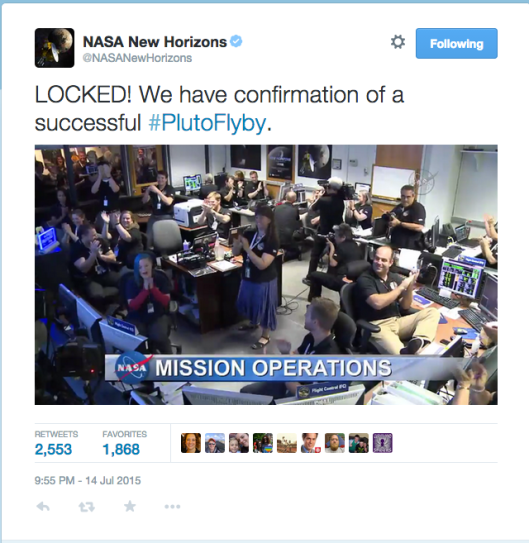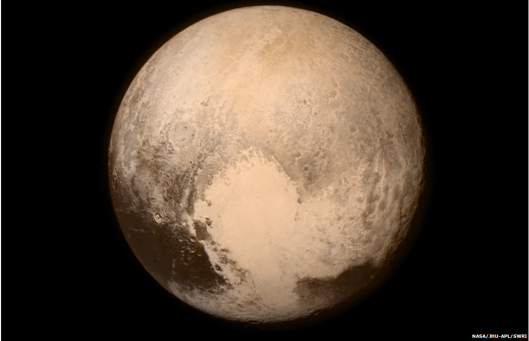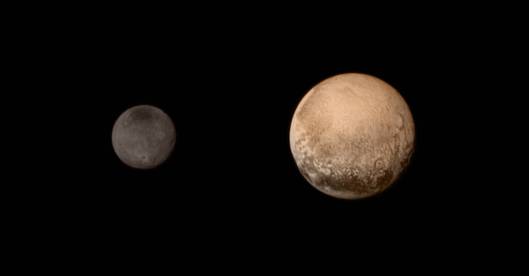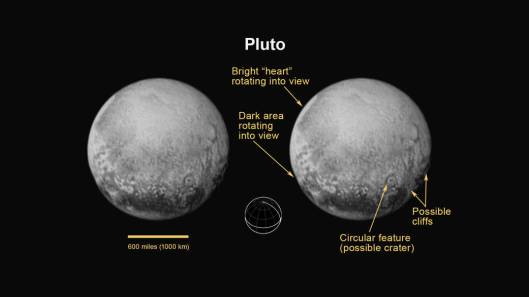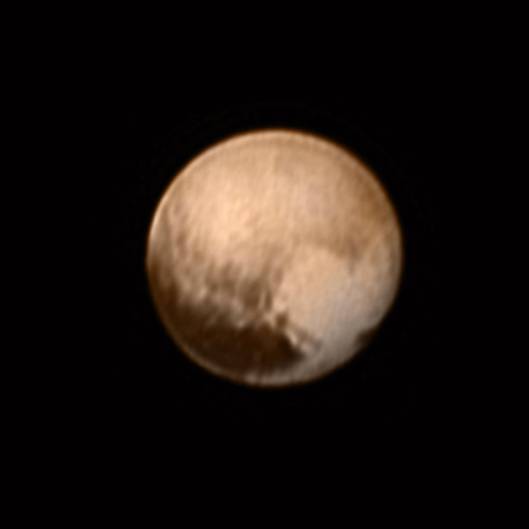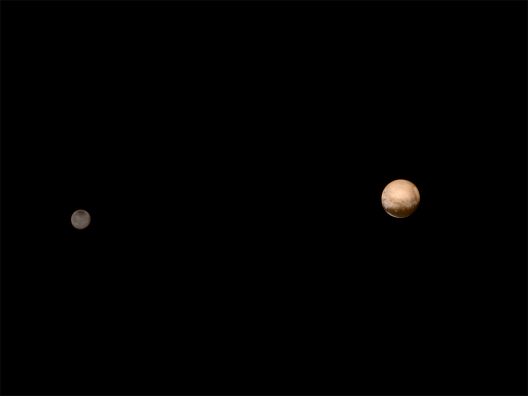It’s been a little more than two weeks since New Horizons made its historic flyby of Pluto. Since then, new photos have trickled out to the masses, each one more interesting than the last. The images shine some light on the planet’s many mysteries, but they’ve also led to a lot more questions.
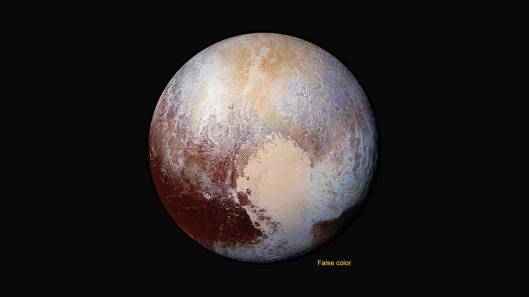
This photo of Pluto was made possible thanks to images taken by the New Horizons’ Long Range Reconnaissance Imager and color data from the Ralph instrument. Credits: NASA/JHUAPL/SwRI
Working together: The left side of the heart-shaped area – informally known at Sputnik Planum – is composed of nitrogen, carbon monoxide and methane ice. “The two bluish-white ‘lobes’ that extend to the southwest and northeast of the ‘heart’ may represent exotic ices being transported away from Sputnik Planum,” according to this NASA release. (FYI: Do you know the significance of “Sputnik”? It’s the name of the first satellite in Earth’s orbit.)
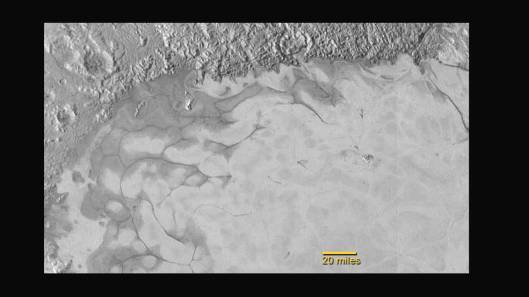
Credits: NASA/JHUAPL/SwRI
What flows there? Let’s talk a bit more about this “exotic” ice. Looking above, you’ll see a sheet of ice that’s found in that heart-shaped region we’ve seen many times over. The ice appears to either have flowed or is currently flowing. (Do you see the darker swirls?) That means Pluto is geologically active, like Earth and Mars. According to NASA, the “swirl-shaped patterns of light and dark suggest that a surface layer of exotic ices has flowed around obstacles and into depressions, much like glaciers on Earth.” Very cool.

Credits: NASA/JHU APL/SwRI
Young mountains: As high as 11,000 feet, these mountains were quite the surprise to the New Horizons team. These are the youngest mountains seen anywhere in our solar system. “Unlike the icy moons of giant planets, Pluto cannot be heated by gravitational interactions with a much larger planetary body. Some other process must be generating the mountainous landscape,” according to this release. Scientists believe the ranges were formed 100 million years ago. While that may seem old to us, our solar system is 4.56 billion years old. These mountains are practically babies.
Something’s going on. What’s inside Pluto? This “Pluto in a Minute” feature could help.

Credits: NASA/JHUAPL/SwRI
HAZY: New Horizons didn’t stop taking pictures after it sped by the frigid world. More than 1 million miles away, the spacecraft snapped this beauty. Backlit by the sun, a ring of light can be seen surrounding Pluto. The haze extends out 60 miles further than scientists expected. “We’re going to need some new ideas to figure out what’s going on,” said Michael Summers, a New Horizons co-investigator at George Mason University. Learn more about this surprising find here.
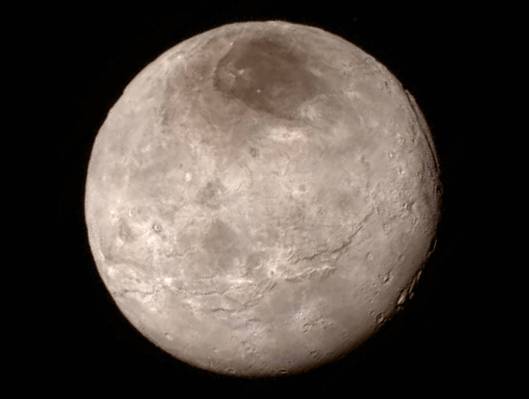
NASA-JHUAPL-SwRI
Why so few craters? Pluto’s largest moon Charon is showing its youth, too. While you can see some craters on the surface, there are relatively few, leading scientists to believe that geological activity has reshaped the moon’s surface, too. Do you see the line in the middle of Charon? Those are cliffs and troughs believed to have been caused by some sort of internal process.
